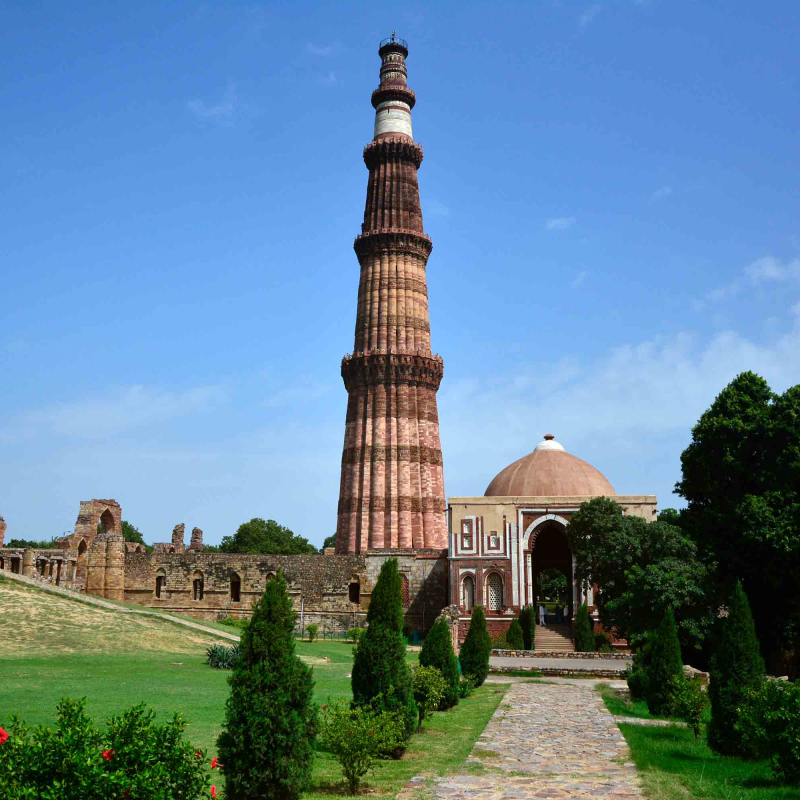Hello Guys!! hope you'll are doin fine, presenting you my new blog. So in this blog i am going to tell you about Qutub Minar. Qutub Minar is a UNESCO World Heritage Site located in Delhi, India . The Qutub Minar Constructed with red sandstone, marbel, lime mortar and rubble masonry, is the tallest brick minaret in the world, with a height of 72.5 meters (237.8 ft). It contains 379 stairs to reach the top. It is surrounded by several by several other ancient and medieval structure.
QUTUB MINAR HISTORY
Qutub Minar is a five - storied structure constructed over four centuries by a number of rulers. it was originally commissioned by Qutb-ud-Aibak, who was the founder of the Delhi's Sultanate, around 1192 as a victory tower. His successor Shams-ud-Iltutmish added three more floors to the structure in 1220. Its topmost story suffered damages in 1369 due to lightning. Around 300 years later, in 1803, the tower again suffered severe damages in an earth quake. Major Robert Smith, a member of the British Indian Army, mended the structure in 1828. He went ahead and installed a pillared cupola to sit atop the fifth story, thus lending the tower its sixth story.

ABOUT QUTUB MINAR: TODAY
Today, this monument is a popular tourist attraction in Delhi and a part of the Qutub Minar Complex. It is also one of the UNESCO World Heritage Sites in Delhi, a status granted to it in 1993 for its historical importance and architectural brilliance.
Qutub Festival, an annual cultural event, is held at this complex every year during the month of November- December. This three- day long festival witness a lively gathering and various mind- blowing performances bt musician, dancers, and artists.
PLACES TO VISIT NEAR QUTUB MINAR
- Tomb of Adham khan (850 m)
- Dargah of Hazrat Khwaja Qutbuddin Bakhtiar Kaki (1.4 km)
- Zafar mahal (1.5 km)
- Jahaz Mahal (2.1 km)
- Hauz-i-Shamsi (2.1 km)
- Jamali Kamali Mosque and Tomb (3.3 km)
- Tomb of Balban (3.3 km)
Now you know why this heritage monument is regarded as one of the best tourist place in Delhi along with the famous Mehrauli Archaeological Park nearby.So, go ahead and spend a day exploring this architectural marvel that has been standing guard over Delhi for ages.











